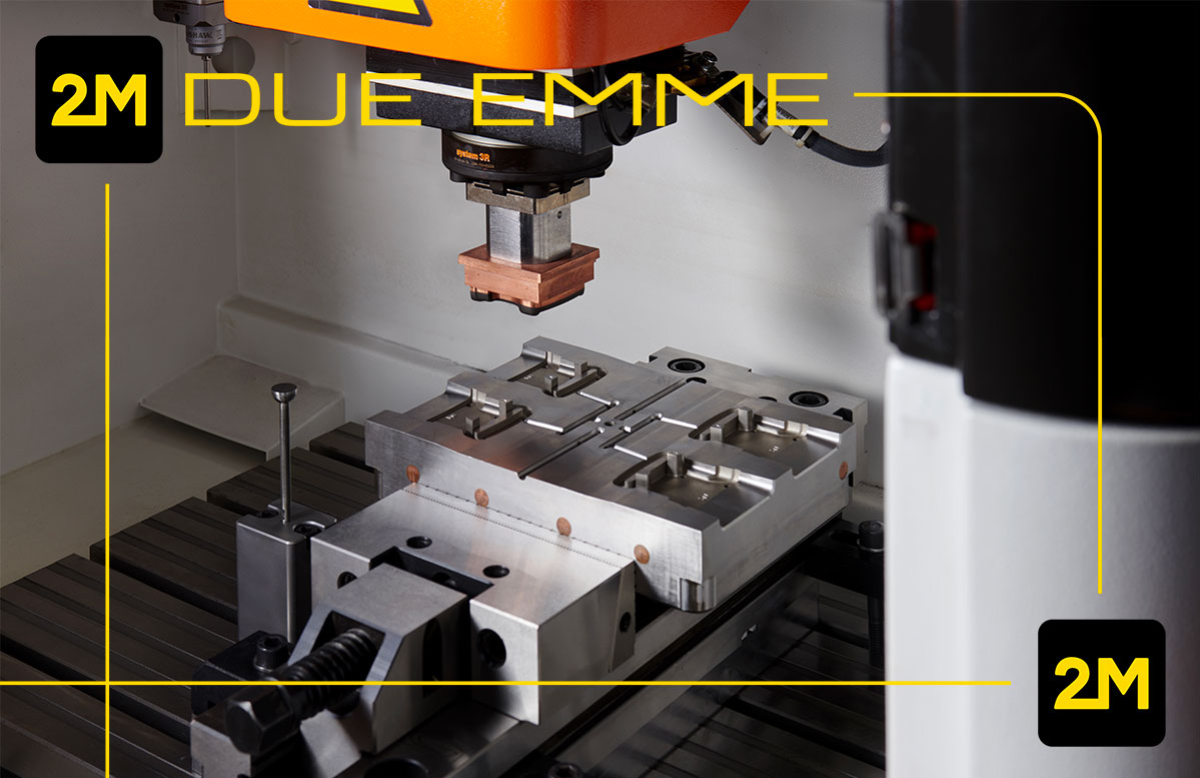
The design and manufacturing of molds for plastic materials is one of the fundamental pillars in the industrial transformation sector, especially in the field of injection molding. This process enables the mass production of high-precision thermoplastic components, intended for various industrial sectors such as those served by 2M.
What is a mold for plastic materials?
The mold is a technical tool made of steel that gives shape to the plastic material. In injection molding, the plastic is melted and injected into the mold, where it cools and solidifies into the desired shape. The entire process is preceded by a mold design phase, which defines the structure and functionality of the mold itself.
The stages of mold design
- Part analysis
The first step in designing molds is analyzing the plastic component: geometry, functionality, thicknesses, type of material, and operating conditions. This helps determine the feasibility and technical characteristics required for the mold. - Selection of plastic material
Choosing the right polymer is crucial: each material has different properties in terms of resistance, stiffness, thermoplasticity, tensile strength, etc. This aspect is especially relevant in plastic mold design. - 3D CAD Design
A 3D model of the mold is created using CAD software. Plastic mold design includes:- Cavities
- Injection systems
- Ejection systems
- Cooling system
- Analysis and simulation
CAE software is used to simulate the material flow (Moldflow analysis), to optimize plastic distribution, reduce cycle times, and prevent defects such as voids, warpage, or weld lines. Mold designers rely on these analyses to ensure final mold efficiency and quality.
Injection mold manufacturing
Once the mold design and manufacturing phase is completed, the mold is physically produced. This process includes:
- Precision machining
CNC machines, EDM (electrical discharge machining), grinders, and high-speed milling machines are used to achieve extremely tight tolerances in injection mold manufacturing. - Thermal treatments and coatings
To increase wear and corrosion resistance, treatments such as hardening, nitriding, or PVD coatings are applied. - Assembly and testing
The mold is assembled, tested, and subjected to both cold and hot trials to verify proper functionality and the absence of defects on the molded part.
Plastic accessories injection molding
Thanks to injection mold manufacturing for plastic materials, it's possible to produce technical components and plastic accessories for various industrial sectors. The quality of the mold is crucial for achieving high-precision final products.
Mold maintenance and lifespan
Molds are complex and costly tools, and proper preventive maintenance is essential to extend their lifespan and ensure consistent product quality over time. The useful life of a mold can range from a few thousand to several million cycles, depending on the materials used and operating conditions.
The strategic value of a custom-designed mold
Mold design and manufacturing is a highly technical discipline that combines engineering expertise, craftsmanship, and technological innovation.
A well-designed mold is not just a production tool, but a strategic investment that determines the quality, costs, and lead times of an entire production chain.
Discover our mold design and manufacturing service for plastic materials and optimize every stage of your production process.
Go to the dedicated page